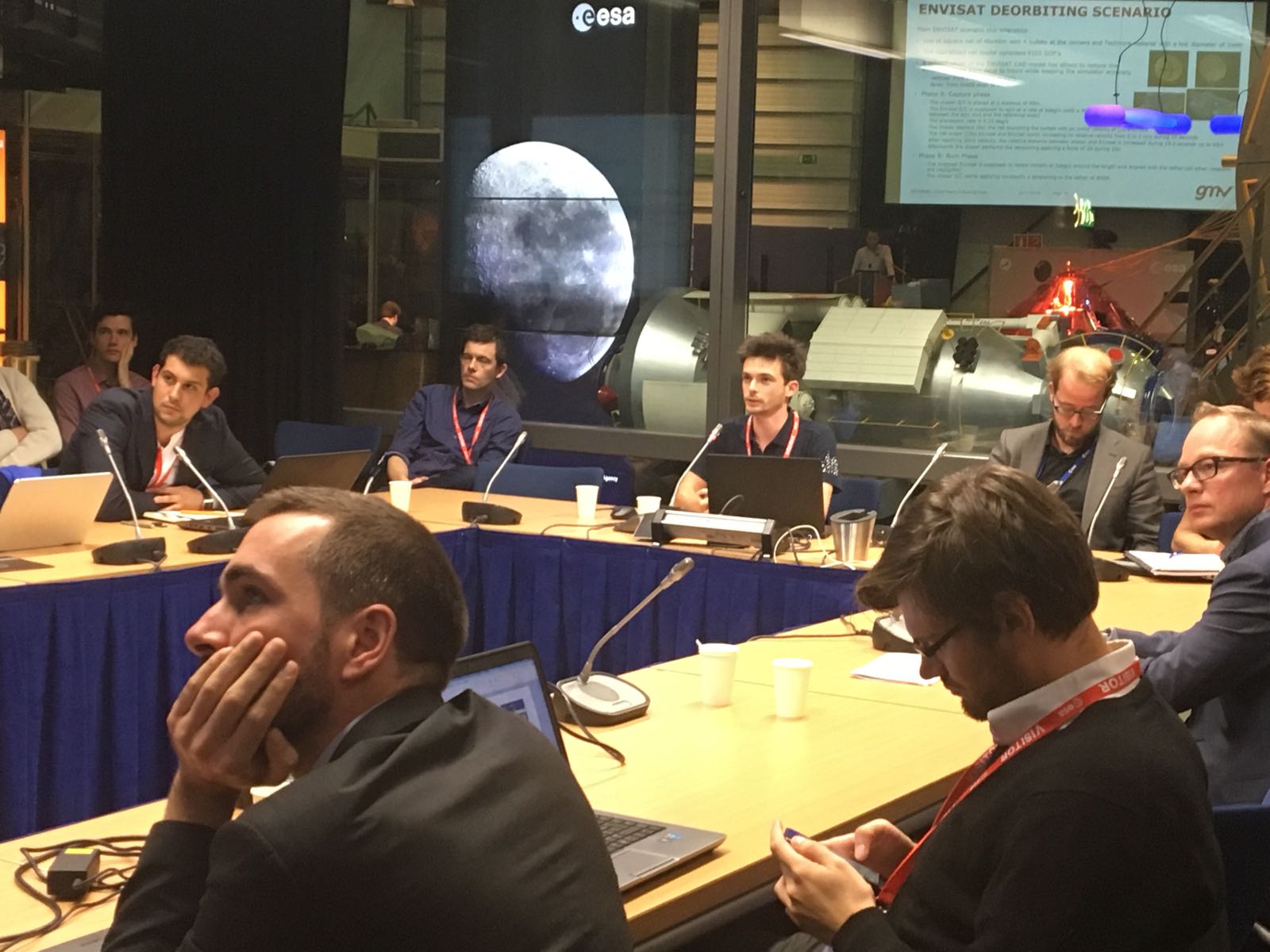A round table on ‘Sustainability of Space’ during our Clean Space Industrial Days gathered together representatives from the space industry, universities and even the UN Committee on the Peaceful Uses of Outer Space (UN COPUOS).
Discussion focused on assigning economic value to key orbits, predicting the deterioration of orbit availability due to space debris, and rules of conduct or even legal measures needed to ensure that satellite services from congested orbits remain viable.

Clean Space Industrial Days – Space Sustainability roundtable
The speakers included:
- Jorge Del Rio Vera of the United Nations Officer of Outer Space Affairs – who explained the different initiatives in which the UNOOSA is involved in on the sustainability of outer space and how these initiatives are related to UNISPACE+50, the special segment of the UN COPUOS and the Space 2030 agenda. Read the presentation ‘Space Sustainability in the 21st Century’;
- Camilla Colombo of the Politecnico di Milano – who presented the results of the ESA activity ‘Spacecraft design indicator for space debris’ currently underway with Politecnico di Milano, the University of Southampton and Deloitte. The consortium is in particular looking into how to integrate a space sustainability criterion in the design phase of space missions;
- Thibaut Maury of the ArianeGroup – who introduced the direct impact chain linking space debris presence within operational orbits and environmental impacts, a first step towards the creation of a new indicator in compliance with the Life Cycle Assessment framework. Read the presentation ‘Towards the consideration of space debris within the Life Cycle Assessment Framework’.
- Michel van Pelt of ESA – presented on behalf of Jahnavi Ghelani ‘Simulating the Beginning of the Congestion-Tipping Period for Earth Orbits’. This Master’s thesis study carried out within the Clean Space office asserts that Sun-Synchronous Earth orbits are a limited, natural resource and goes on to construct a quantitative model to estimate at which moment the increasing population of space debris starts to significantly impact satellite missions in these orbits, in terms of operational efficiency (increased number of collision avoidance manoeuvres) and untracked debris impact risk.
- At last, Romain Esteve of the Toulouse School of Economics – presented the results of the work he carried out within the Clean Space office in 2017 to complete his Master’s thesis: ‘An economic valuation methodology for space debris’.
We invited the speakers to sum up their talks for the Clean Space blog’s readers.
- For six months, Romain Esteve studied the assigning of economic value to orbits following in-orbit collisions. Read his post: A methodology for giving economic value to space debris
- Thibaut Maury presents the results of its research on how to integrate space debris impacts within a ‘classical’ LCA study. Read his post: How to evaluate the environmental impacts of space debris
- Jahnavi Gehlani prepared her master thesis in cooperation with ESA. She sums up part of the results of her researches in the post Adding ‘Earth Orbits’ to the list of limited natural resources





Discussion: no comments